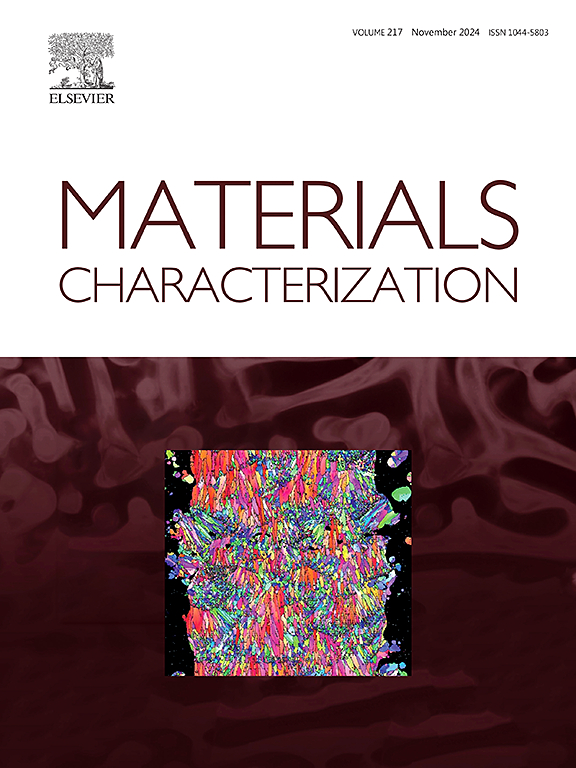Systematic study of plastic non-equilibrium in AlMg alloy containing solute clusters
IF 4.8
2区 材料科学
Q1 MATERIALS SCIENCE, CHARACTERIZATION & TESTING
引用次数: 0
Abstract
The microstructure and Portevin-Le Chatelier (PLC) effect of a cryogenic submerged friction stir processed (SFS) Al![]() Mg alloy were investigated by electron backscatter diffraction, transmission electron microscopy and tensile tests. Compared to the traditional friction stir processed (FSP) alloy, the SFS alloy showed similar grain refinement but lower proportion of recrystallized grains. Moreover, solute clusters were introduced in the alloy by cryogenic processing, which reduced the extreme amplitude and the average stress drop of serrated flow in the tensile stress-strain curves. The average stress drop within the identical region was diminished from 4.6 MPa in the case of FSP alloy to 3.8 MPa for SFS alloy. According to the quantitative multifractal analysis, the multifractal indices for specimens from three parts of stirring zone were transformed from 0.97, 0.78 and 1.77 of the FSP alloy to 1.05, 1.19 and 0.94 of the SFS alloy. Consequently, in comparison with FSP treatment, the technology route of SFS was conducive to reducing the difference among the overall serrated behaviors in stress-strain curves of specimens from three parts of the stirring zone. Finally, it could be found that multifractal heterogeneity was positively correlated with the fracture elongation, and the relationship between multifractal heterogeneity and mechanical properties was discussed.
Mg alloy were investigated by electron backscatter diffraction, transmission electron microscopy and tensile tests. Compared to the traditional friction stir processed (FSP) alloy, the SFS alloy showed similar grain refinement but lower proportion of recrystallized grains. Moreover, solute clusters were introduced in the alloy by cryogenic processing, which reduced the extreme amplitude and the average stress drop of serrated flow in the tensile stress-strain curves. The average stress drop within the identical region was diminished from 4.6 MPa in the case of FSP alloy to 3.8 MPa for SFS alloy. According to the quantitative multifractal analysis, the multifractal indices for specimens from three parts of stirring zone were transformed from 0.97, 0.78 and 1.77 of the FSP alloy to 1.05, 1.19 and 0.94 of the SFS alloy. Consequently, in comparison with FSP treatment, the technology route of SFS was conducive to reducing the difference among the overall serrated behaviors in stress-strain curves of specimens from three parts of the stirring zone. Finally, it could be found that multifractal heterogeneity was positively correlated with the fracture elongation, and the relationship between multifractal heterogeneity and mechanical properties was discussed.
求助全文
约1分钟内获得全文
求助全文
来源期刊

Materials Characterization
工程技术-材料科学:表征与测试
CiteScore
7.60
自引率
8.50%
发文量
746
审稿时长
36 days
期刊介绍:
Materials Characterization features original articles and state-of-the-art reviews on theoretical and practical aspects of the structure and behaviour of materials.
The Journal focuses on all characterization techniques, including all forms of microscopy (light, electron, acoustic, etc.,) and analysis (especially microanalysis and surface analytical techniques). Developments in both this wide range of techniques and their application to the quantification of the microstructure of materials are essential facets of the Journal.
The Journal provides the Materials Scientist/Engineer with up-to-date information on many types of materials with an underlying theme of explaining the behavior of materials using novel approaches. Materials covered by the journal include:
Metals & Alloys
Ceramics
Nanomaterials
Biomedical materials
Optical materials
Composites
Natural Materials.
 求助内容:
求助内容: 应助结果提醒方式:
应助结果提醒方式:


